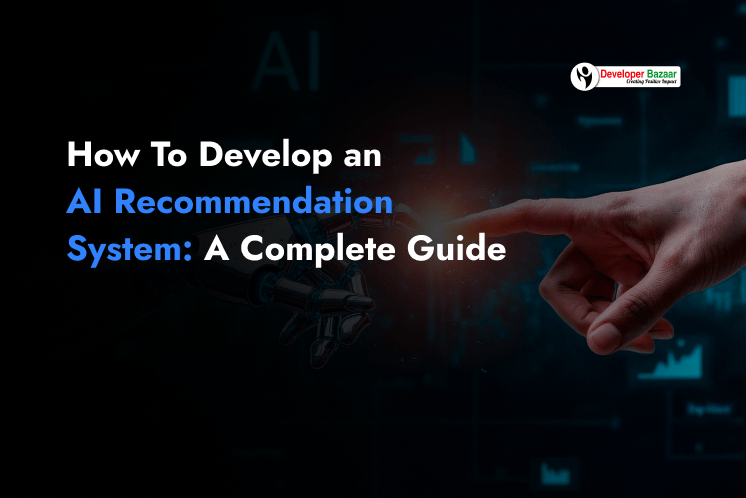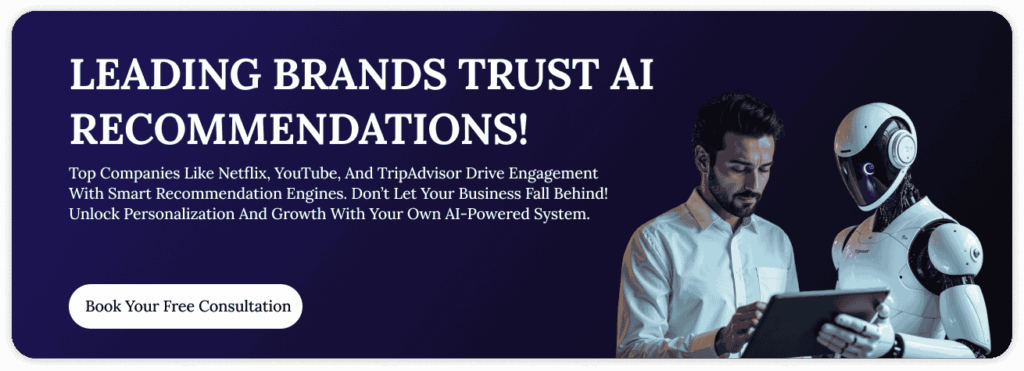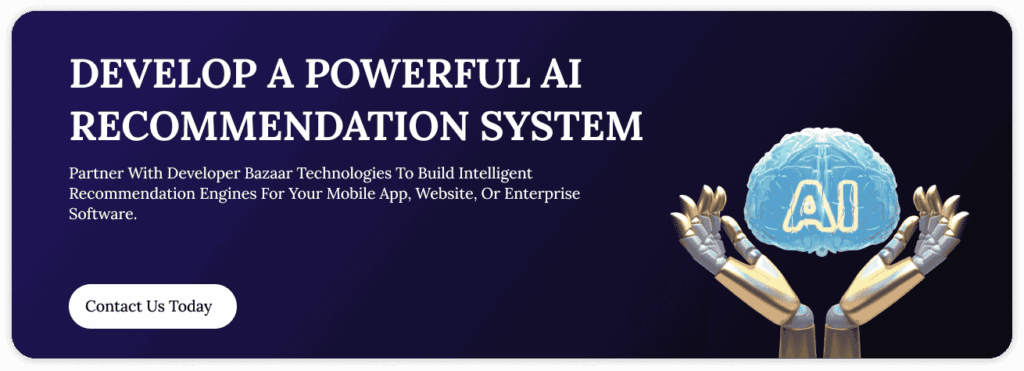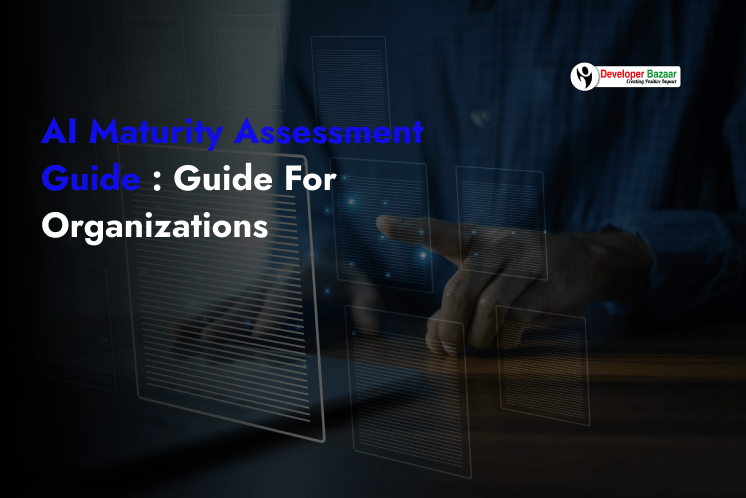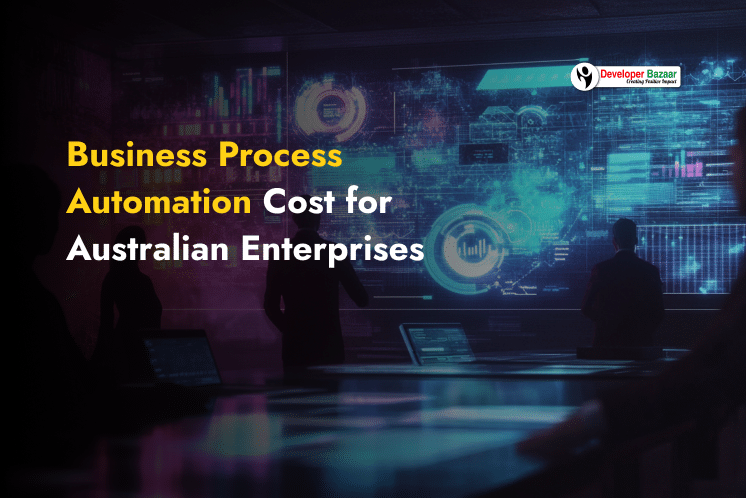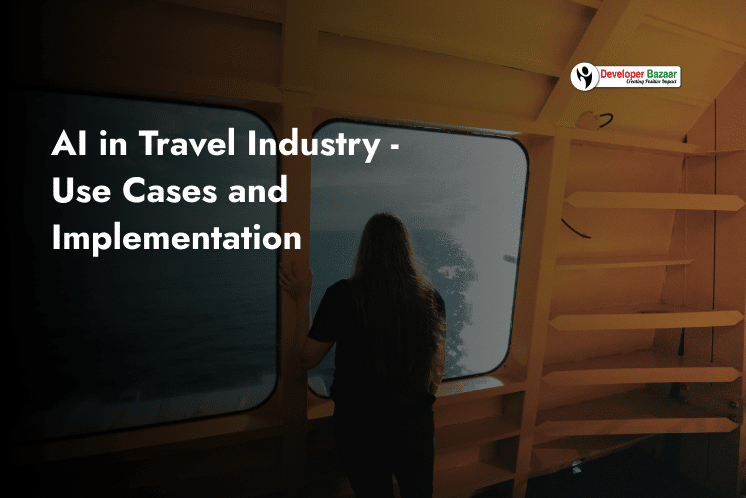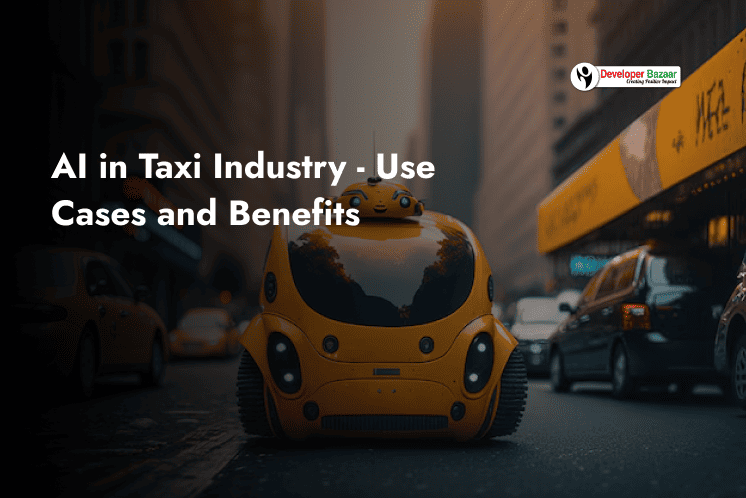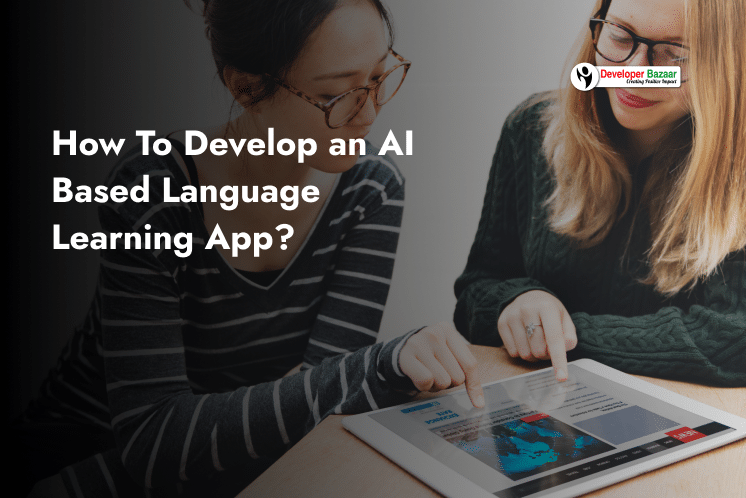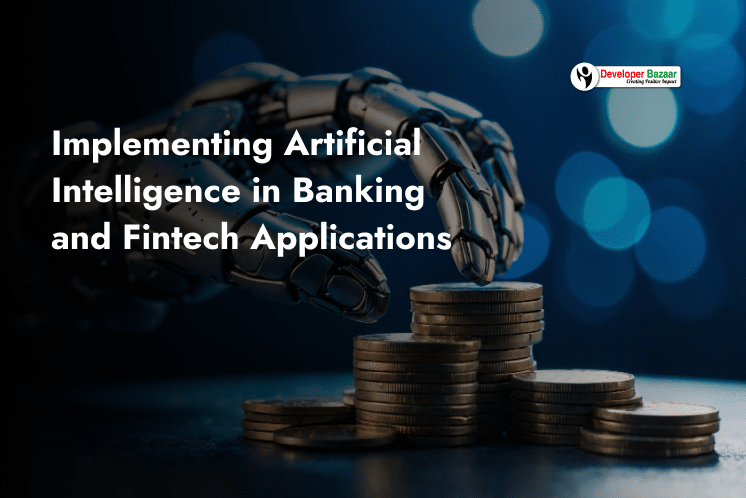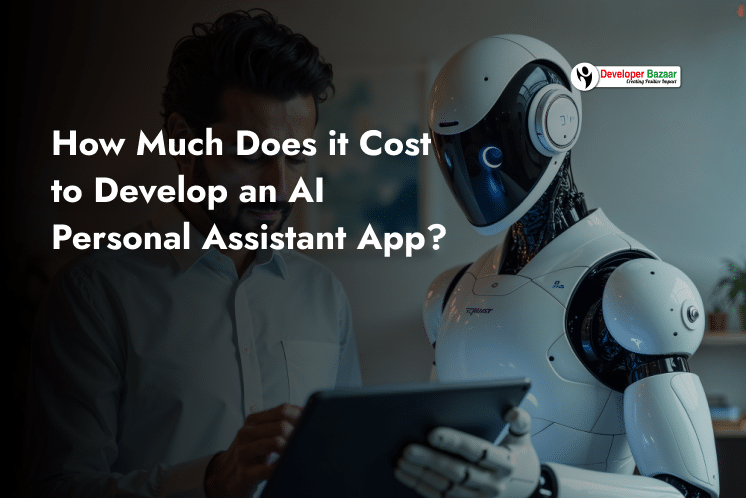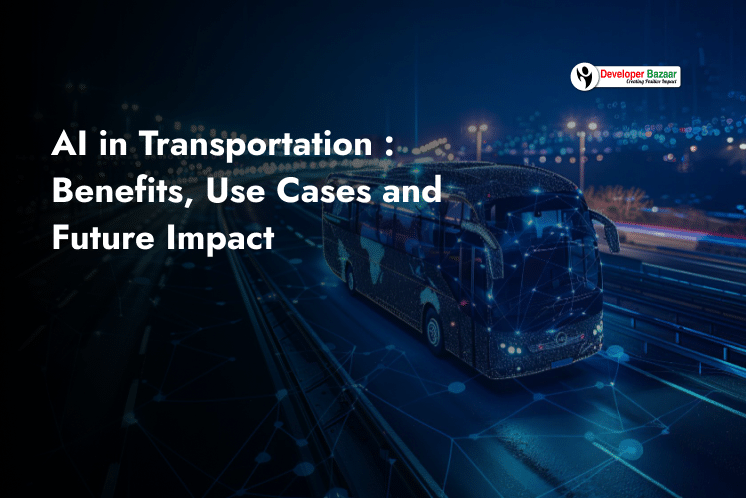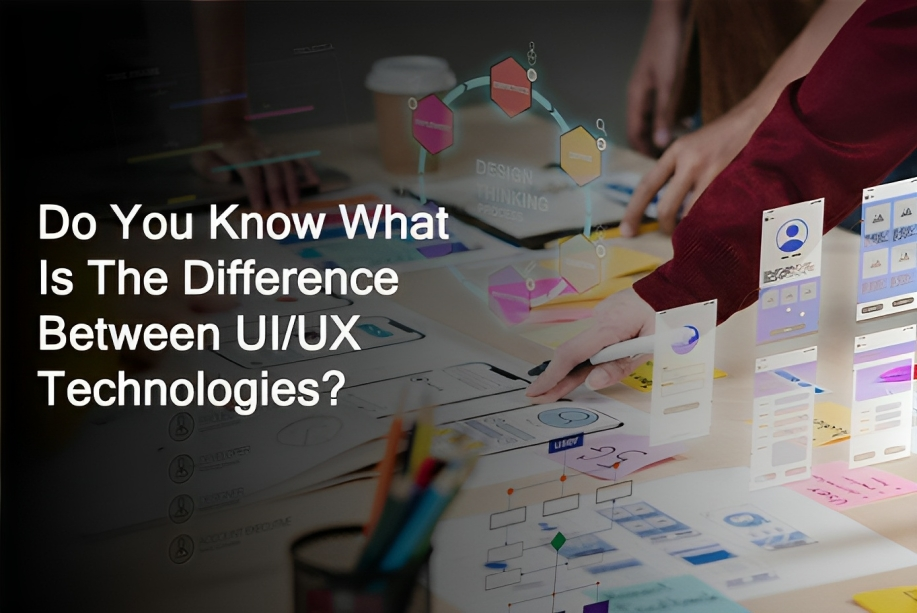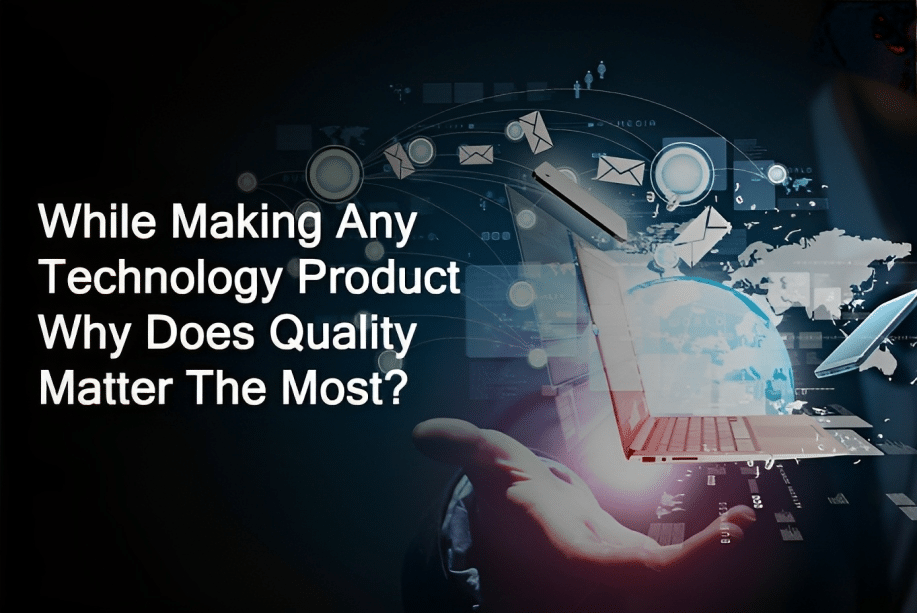Table of Contents
ToggleIf someone recommends us anything, whether what to do next, what to watch, what to buy, or anything else, it helps us a lot. But what if these recommendations are not just random, but are data-driven and AI-analyzed? It will be fast, more accurate, and align with the expectations.
Think the same way, businesses are now investing heavily in developing AI recommendation systems, the same technology behind platforms like Netflix, Amazon, Spotify, and many others. These systems leverage user data and machine learning to provide personalized suggestions that boost engagement and sales.
According to Precedence Research, the global AI recommendation engine market is expected to grow at a CAGR of 36.33% to exceed around $119.43 billion by 2034.
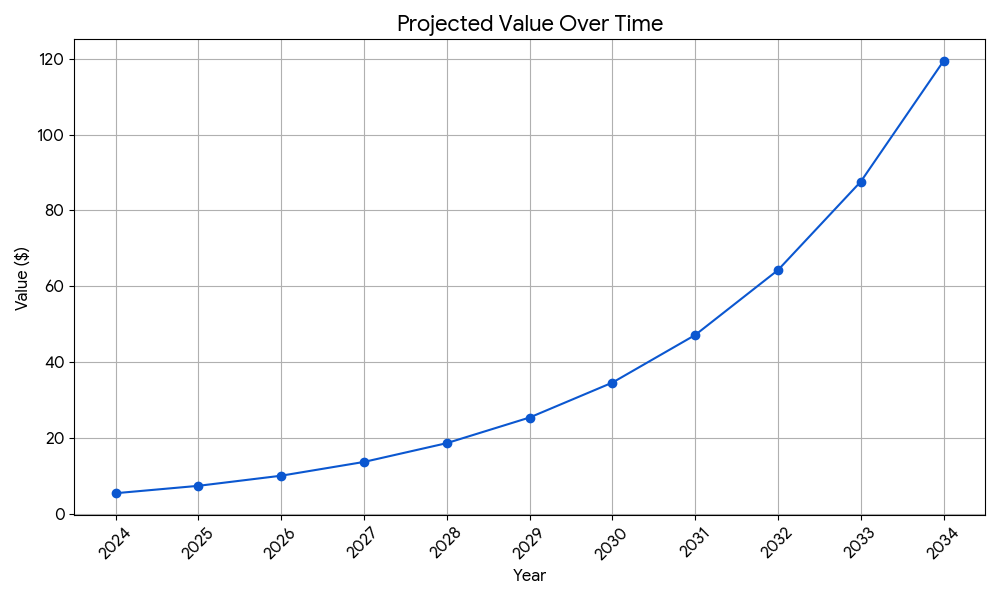
These AI-powered recommendation engines can be implemented into software to be used for internal purposes to enhance productivity, or into websites or mobile apps to recommend accurate products and services.
If you are also a business and eager to learn how to develop an AI recommendation system, then read this blog till the end, as it walks you through the types of AI recommendation engines, the process to build an AI recommendation system, its benefits, the cost to develop, and more. So, let’s start.
What is an AI Recommendation System?
AI recommendation systems or engines are algorithm-driven tools or software that are used to suggest information, products, services, etc. to the users.
These systems are typically integrated into websites and apps to analyze data that includes browsing history, clicks, purchases, ratings, location, and more, using machine learning and data analysis techniques to provide tailored recommendations in real time.
Here is the brief process to show you how AI recommendation engines work.
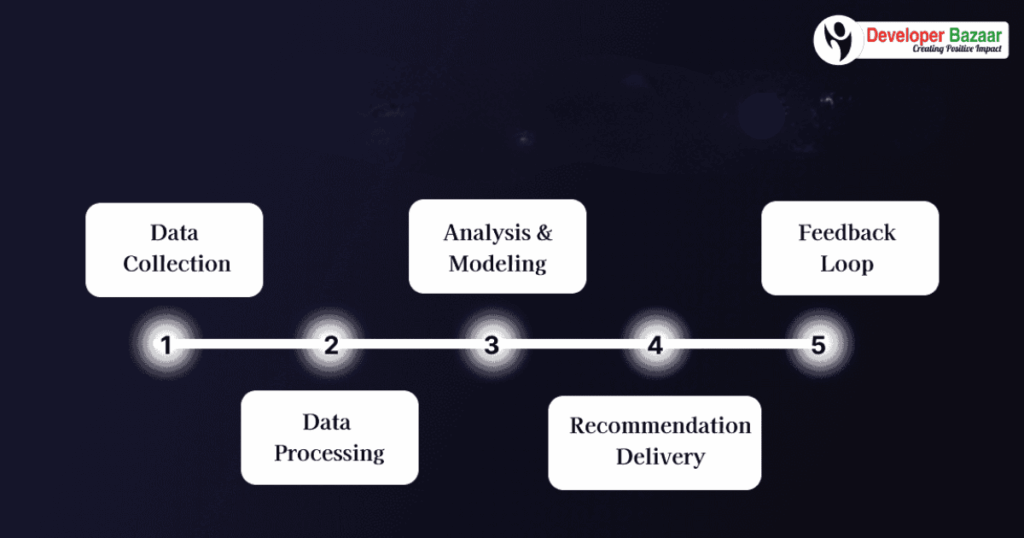
Data Collection
The AI recommendation engine first collects the data, such as users’ location, age, clicks, purchases, browsing history, and more.
Data Processing
After the data collection, the filtering and preprocessing systems clean and remove the noise from the data, and organize it for the analysis.
Analysis & Modeling
In this stage, the machine learning comes into action. The ML algorithms identify patterns in the data and predict preferences.
Recommendation Delivery
Lastly, after the analysis, the AI-driven recommendation system provides personalized suggestions or recommends information or products to the users in real time.
Feedback Loop
Once the recommendations are delivered, the system tracks the user actions and provides feedback to the engine so that it can continuously learn and improve.
Types of AI Recommendation Engines
Before moving on to the development process, let’s first understand the different types of AI-driven recommendation systems.
There are mainly six types of AI recommendation engines, each of which uses different approaches to analyze data and provide personalized suggestions.
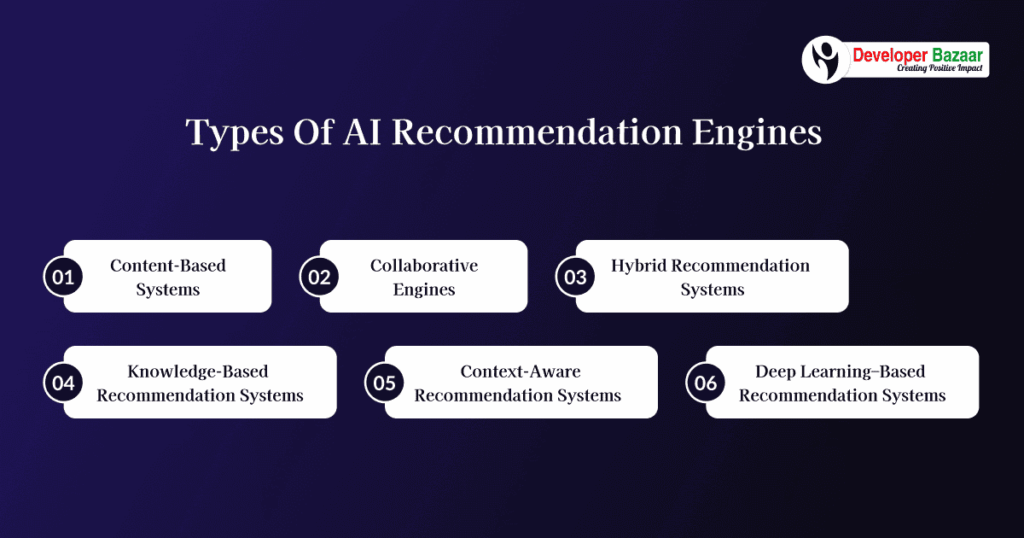
1. Content-Based Systems
The content-based engines are the type of AI recommendation system that suggests items similar to what a user has shown interest in before. These systems are designed to analyze item attributes, such as genre, keywords, and features, and match them with the user’s past interactions.
Example: An AI recommendation system in a news app like Google News that suggests articles related to topics you have already read about.
2. Collaborative Engines
Another type of AI recommendation system is the collaborative engines that rely on user behavior and preferences. These recommendation systems identify patterns by finding users with similar interests (user-based) or recommending items that are often liked together (item-based).
Example: Recommendation engine in Amazon e-commerce app and website that suggests to users “Customers who bought this also bought”.
3. Hybrid Recommendation Systems
The third type of ML recommendation engine is the hybrid recommendation system, which combines both content-based and collaborative filtering techniques to deliver more accurate results.
Example: Netflix, a popular streaming platform, has a hybrid recommendation system that provides suggestions with high accuracy.
4. Knowledge-Based Recommendation Systems
Knowledge-based recommendation systems are among the top AI recommendation systems that are used in domains like travel, real estate, and others. These machine learning engines suggest items based on explicit user inputs and domain knowledge rather than depending on historical data.
Example: Popular travel website Tripadvisor and real estate app Magicbricks have knowledge-based AI recommendation systems on their websites and mobile applications.
5. Context-Aware Recommendation Systems
The context-aware recommendation engines that use machine learning to consider additional factors such as time, location, weather, or device when making recommendations to the users.
Example: Famous food-delivery apps like Uber Eats and Zomato have context-aware recommendation systems that suggest, for example, hot beverages on a rainy evening or corporate-friendly lunch deals during office hours.
6. Deep Learning–Based Recommendation Systems
The last on the list is the deep learning-based recommendation systems that leverage neural networks to process complex and large-scale data. These engines analyze not only user behavior but also multimedia content like text, images, and videos to generate precise recommendations.
Example: YouTube’s video recommendations are a prime example, where the deep learning-based recommendation system evaluates viewing history, thumbnails, and engagement patterns, and then suggests videos.
Step-by-Step Process to Build an AI-Powered Recommendation System
By following the mentioned process, you can develop a custom AI recommendation system aligning with your specific business needs.
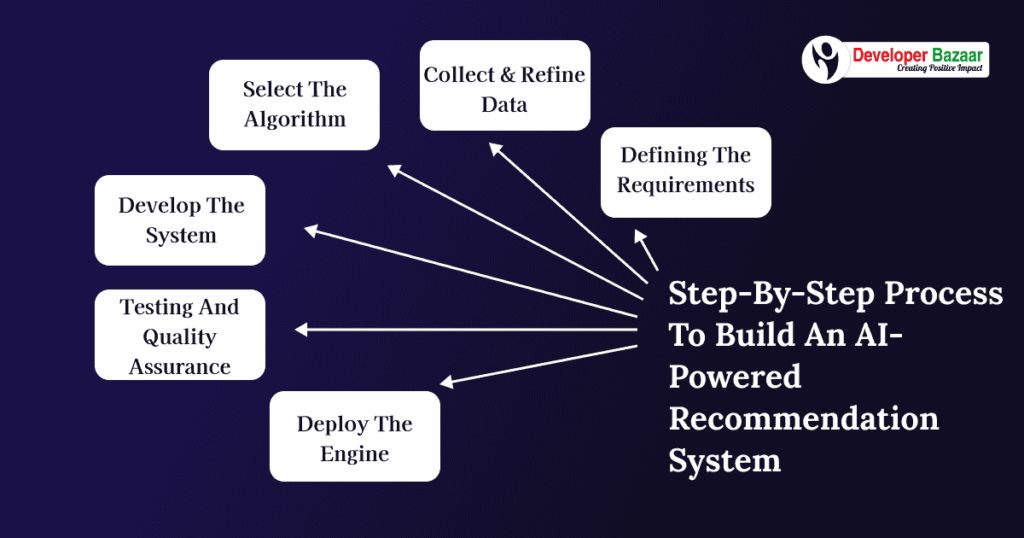
1. Define the Requirements
The kind of app you decide to create affects how much it will cost. Different apps nea
To start the AI recommendation system development, you need to first identify your business objectives and user needs. Define what the goal of the AI recommendation engine is.
Is it for improving engagement and retention or increasing sales, or any other purpose? Along with this, outline the scope, KPIs, and success benchmarks.
2. Collect and Refine Data
AI recommendation engines work on data. Therefore, you need to collect data, such as users’ browsing history, clicks, purchases, and ratings, along with item attributes.
After the data collection, refine it through preprocessing. Remove duplicates, fill missing values, and structure it so the dataset is clean, reliable, and ready for analysis.
3. Select the Algorithm
Once the data is ready, you need to choose the appropriate algorithm based on data availability and project goals.
You can go for collaborative filtering, content-based filtering, hybrid methods, or deep learning approaches to ensure accurate and personalized recommendations for users.
For this purpose, it is highly recommended that you hire AI developers in India who can help you with creating algorithms for your recommendation system.
4. Develop the System
Now comes the crucial part of the development process. At this stage, you need to engage your development team to build the core architecture of the recommendation engine, integrating data pipelines, model training, and APIs.
Moreover, you must ensure that the system is scalable, efficient, and compatible with your platform, whether it’s a website, mobile app, or enterprise software.
5. Testing and Quality Assurance
Before using the AI recommendation engine in real life, it is necessary that you test it thoroughly.
Hence, test your AI recommendation system using metrics like precision, recall, or NDCG, and run A/B testing to check its real-world performance.
6. Deploy the Engine
Once the testing is complete, integrate the recommendation system into your live environment. Connect it with your product catalog, user data, and interface, so that it can provide recommendations in real-time.
Also, during the deployment, ensure that it maintains speed, accuracy, and scalability while delivering personalized suggestions in real time.
7. Monitor and Upgrade
Lastly, continuously track your AI recommendation system’s performance, user interactions, and accuracy. Keep monitoring the feedback and use it to retrain models, add new features, and refine algorithms.
It is a crucial part as regular monitoring ensures the AI recommendation engine adapts to changing user preferences and business needs with time and stays relevant.
Benefits of Developing an AI Recommendation System
The following are the top benefits of building an AI recommendation system for a business.
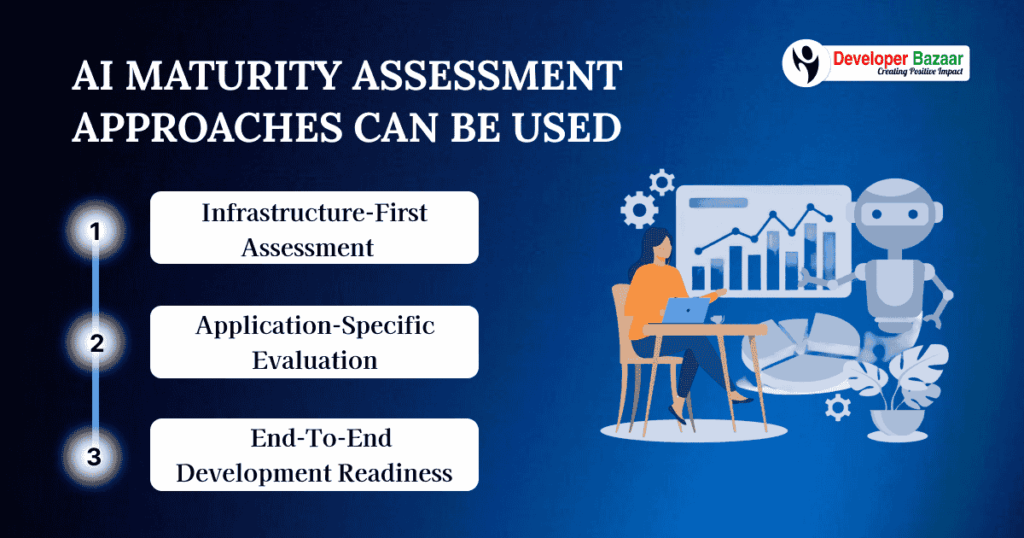
1. Enhanced User Experience
The major benefit of AI recommendation system development is that it helps in enhancing user experiences.
Custom AI recommendation systems provide personalized suggestions about relevant products or content for each user, making their journey smoother and more enjoyable when they are using your app, software, or website.
2. Increased Conversion Rates
AI recommendation systems play a key role in increasing conversion rates for any business. These systems show users what they are looking for or might like faster, which also saves their time.
This increases the chances of purchases, subscriptions, or desired actions, directly improving conversion rates and boosting overall revenue growth for businesses.
3. Higher Customer Retention
By developing AI recommendation systems, businesses can achieve higher customer retention. When users are recommended what they like or are looking for, they feel understood and valued, which strengthens brand loyalty.
Over time, this personalized engagement builds long-term customer relationships, reducing churn and improving lifetime value for the business.
4. Improved Sales & Upselling Opportunities
AI-powered recommendation systems analyze the purchase behavior of the users and suggest to them complementary products or premium upgrades.
With this, you can open opportunities for upselling and cross-selling, increasing the average order value and maximizing revenue per customer without requiring aggressive sales tactics.
5. Better Business Insights
Businesses gain insights into customer preferences, buying patterns, and trends by leveraging ML-powered recommendation engines or systems.
Using these insights, they can later refine their marketing strategies, optimize inventory, and improve decision-making at every level.
6. Real-Time Personalization
Unlike traditional systems, AI recommendation engines adjust suggestions instantly based on current user activity.
This real-time adaptability of the AI recommendation engines ensures that suggestions remain highly relevant, improving click-through rates and keeping users engaged throughout their session.
Cost to Develop AI Recommendation Systems
When it comes to breaking down the cost to develop AI recommendation systems, it is crucial to first understand the factors that influence it. The development costs depend on various factors such as:
- Type of AI recommendation system
- Data collection, filtering, and storage
- Technology stack
- Algorithm complexity
- System integration
- Development team
- Maintenance and updates
- Compliance and security, and others.
These are the major factors that drive the cost of building AI-powered recommendation engines. However, for the estimated idea, you can refer to the recommendation engine development costs mentioned below.
| Type of AI Recommendation System | Estimated Development Costs ($) |
|---|---|
| Basic (Content/Collaborative) | $20,000 – $50,000+ |
| Advanced (Hybrid/Deep Learning) | $60,000 – $200,000+ |
*Please note that these costs are only estimates. For an actual cost breakdown, reach out to our team.
Conclusion
AI recommendation systems are tools that give accurate suggestions, or recommendations to be specific, about the products, services, or information, to the users in real time. These engines use machine learning, different types of algorithms, and data to understand users’ preferences, and based on that, they provide recommendations.
AI recommendation systems not only make users’ journey better through relevant suggestions, but also help businesses in increasing their customer engagement, retention, sales, and gain useful business insights.
In this blog, we helped you by providing a step-by-step process to develop a custom AI recommendation system that you can integrate into your app, website, or software. Along with it, we provided you with its development costs estimations to give you an idea of how much investment you would require to build an ML recommendation engine.
If you are ready to develop your AI-powered recommendation engine, then reach out to Developer Bazaar Technologies, the best AI development company, which has developed various cutting-edge engines for enterprises and startups in various industry verticals.
Frequently Asked Questions
Q1. Why is developing an AI recommendation system necessary?
Developing an AI recommendation system is necessary because it helps you provide personalized recommendations or suggestions about your products and services to your users, which will result in higher user engagement and sales for your business.
Q2. Which is the best AI recommendation system development company in India?
Developer Bazaar Technologies is the top AI recommendation development company in India. We specialize in building custom AI-powered recommendation engines tailored to diverse business needs.
Q3. How long does it take to develop an ML-powered recommendation engine?
Typically, it takes around 3-5 months to build a basic ML recommendation system and 7-10 months to develop an advanced recommendation engine. However, this time slot may vary depending on factors such as complexity, type, features, development team, and more.
Q4. Which technologies are used in AI recommendation system development?
Common technologies, including Python, Scikit-learn, TensorFlow, PyTorch, Apache Spark, and databases like SQL, MongoDB, or Neo4j, are widely used in developing AI recommendation systems.
Q5. How can I get started building a custom AI recommendation system?
You can contact us and start building your custom AI recommendation system right away.

Arpit Vaishnav
CTO
Developer Bazaar technologies
